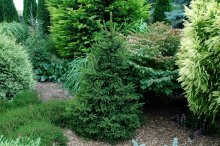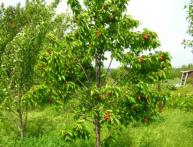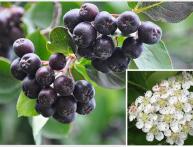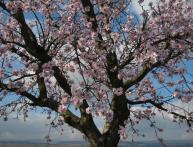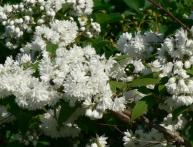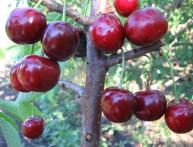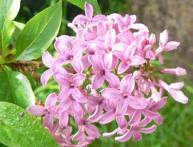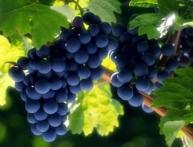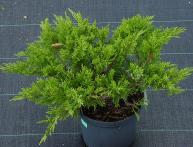How to choose flowering shrubs for your garden so that they bloom all season long
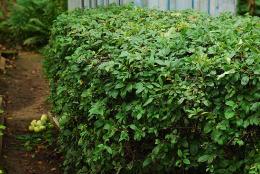
When landscaping their plot, every owner wants to see it blooming from early spring to late autumn. If you approach the assortment wisely, you can choose flowering shrubs for your dacha so that even in late autumn there will be bright colors in the garden.
Content:
Shrubs blooming in spring
After a cold winter, the spring mood in the garden is brought by those shrubs that not only bloom early, but also their flowers bloom before the leaves open. Also pleasing to the eye are those plants that bloom in the spring simultaneously with the opening of the leaves, but their flowering is so abundant that neither branches nor leaves are visible from under the bright inflorescences.
There are also quite modest specimens, but their flowers are very fragrant. The most popular are the following shrubs that bloom in spring:
- forsythia
- spring spirea
- bean
- quince Japanese
- rhododendron
- mock orange
- lilac
Forsythia
When forsythia blooms in the garden in the spring, it may seem as if a piece of the sun has settled in it. The bush is one of the first to bloom, there are no leaves on it yet, the surrounding plants stand with bare branches, and the forsythia blazes with a bright yellow torch.
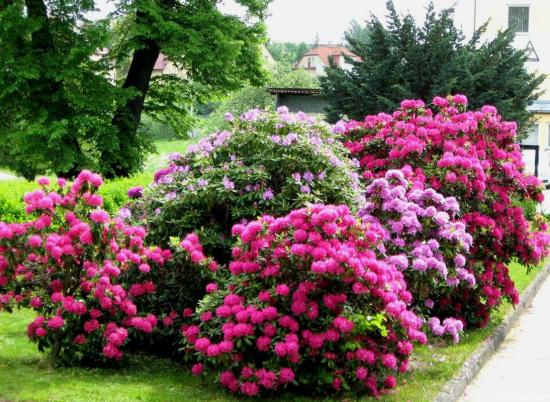
The genus Forsythia includes several species, the cultivated varieties of which are quite unpretentious and tolerate drought and low temperatures well. The genus itself belongs to the Olive family.The following types are suitable for planting in the garden:
- hanging forsythia is a deciduous shrub, its height is up to 2.5 - 3 m, the shoots are arched, hanging, the flowers are large, up to 3 cm in diameter, collected in bunches of 2-6 pieces, looks impressive on trellises, has decorative forms with variegated foliage , purple trunks;
- forsythia intermediate - bushes up to 3 m high, shoots straight, unpretentious and frost-resistant, has a huge number of decorative forms;
- Forsythia ovate is the earliest flowering of all forsythia, the height of the shoots is up to 1.5 m, the leaves also become decorative in the fall, acquiring a purple-yellow color.
In the garden, forsythia is best placed against the background conifers, along the paths, in small groups. Considering that the plant is most decorative only in spring, flowering perennials can be planted near forsythia. The plant is quite easy to grow.
It tolerates dry periods well and can be cut. Forsythia loves well-lit places; partial shade is also suitable. The soil needed is light, sandy, mixed with leaf soil. Reacts well to the addition of lime.
At the beginning of spring, you need to carry out 2-3 fertilizing with universal mineral fertilizers. Forsythia does not tolerate waterlogging well, so it should only be watered during severe drought. Shrubs that bloom in spring are being replaced by plants that bloom in summer.
Shrubs blooming in summer
The choice of shrubs that bloom in summer is very large. When choosing them for your dacha, you can decorate the area with long-flowering plants in a certain color scheme. Summer blooming shrubs:
- summer spirea
- weigela
- hydrangea
- Kuril tea
- caragana
- budleya
- euonymus
Weigela
The flowering time of this shrub is early summer.Flowers pink, lilac, purple. Flowering duration is up to 15 - 20 days. The shape of the flowers is elongated graceful bells. The plant is suitable for planting in the shade. Weigela tolerates pruning well and is suitable for hedges.
For growing in the garden, we can recommend weigela floribunda and weigela profusely flowering. The disadvantages of weigela include the low winter hardiness of some varieties, and the fully opened leaves somewhat hide the beautiful flowers.
Euonymus
The genus of plants Euonymus includes several species that are used in landscaping. It is worth noting the warty euonymus. Shrub up to 2 m tall. The shoots are bright green. They are dotted with dark growths "warts". The plant is slow growing.
The flowers are original, red-brown. Flowering time is June, flowering duration is up to four weeks.
In the summer, the warty euonymus may not make the right impression in the presence of its brighter neighbors, but with the onset of autumn its bushes are transformed. The leaves turn pink, and the fruits are red capsules with brown or orange bracts that look like bright lanterns.
This autumn outfit is why dacha owners love euonymus. The plant grows well in the shade; most species have high winter hardiness. Separately, it is worth paying attention to the still quite rare, but no less decorative flowering shrubs for the garden.
Rare shrubs for the garden
The following plants are not very popular, but they can still be used in landscaping:
- cletra
- scumpia
- dedesnea
- lily of the valley or chalesia tree
Kletra
This plant is one of the most attractive late flowering shrubs.Most often in gardens you can find alder clethra. She belongs to the Vereskov family. Blooms in late summer - early autumn. The inflorescences look like tall thin candles of pink or white color.
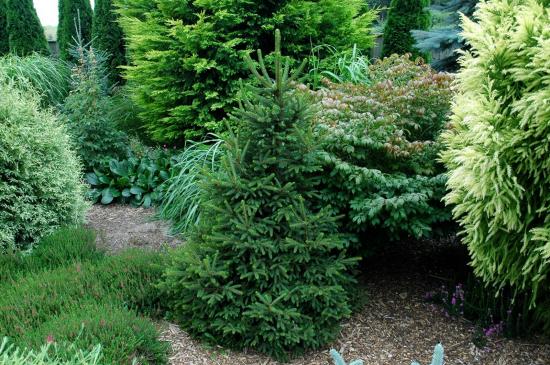
The flowers have a very delicate, refined aroma. Bushes are usually up to 2-3 m in height, there are miniature varieties whose height is up to 0.9 m. It grows well in moist places under the protection of tall plantings. It is advisable to place it so that there is shade on the site after lunch.
Needs extra watering. When grown on site, clethra is irreplaceable where there is high humidity, bordering on swamp. In this case, even the bright sun does not harm it. At a young age, it is better to cover the clethra with spruce branches for the winter. Propagates well by root shoots. Late varieties bloom in September; in autumn, clethra has unusually bright foliage.
Galesia
This shrub has several poetic names:
- silver bell tree
- lily of the valley tree
- snow drop tree
The plant belongs to the Styrax family. While the shrub is quite rare in landscaping, it is very attractive. In June, large white bells resembling lilies of the valley appear among the leaves. By the end of summer, fruits similar to pears are formed. Galesia carolina is suitable for growing in temperate climates.
It is better to plant it in a place protected from the wind with fertile soil. The plant has a fairly large crown and is not suitable for small gardens. To preserve its decorative appearance, it requires sanitary pruning of dried, frozen and damaged branches. In addition to the above plants, the following flowering shrubs can be grown for decorative purposes, the fruits of which can be eaten:
- irgu
- currants of all colors
- blackberries
- hawthorn
The range of ornamental flowering shrubs is currently very wide, planting material can be found in special stores, including online, all that remains is to make the right choice.
Review of a rare shrub - cletra:


